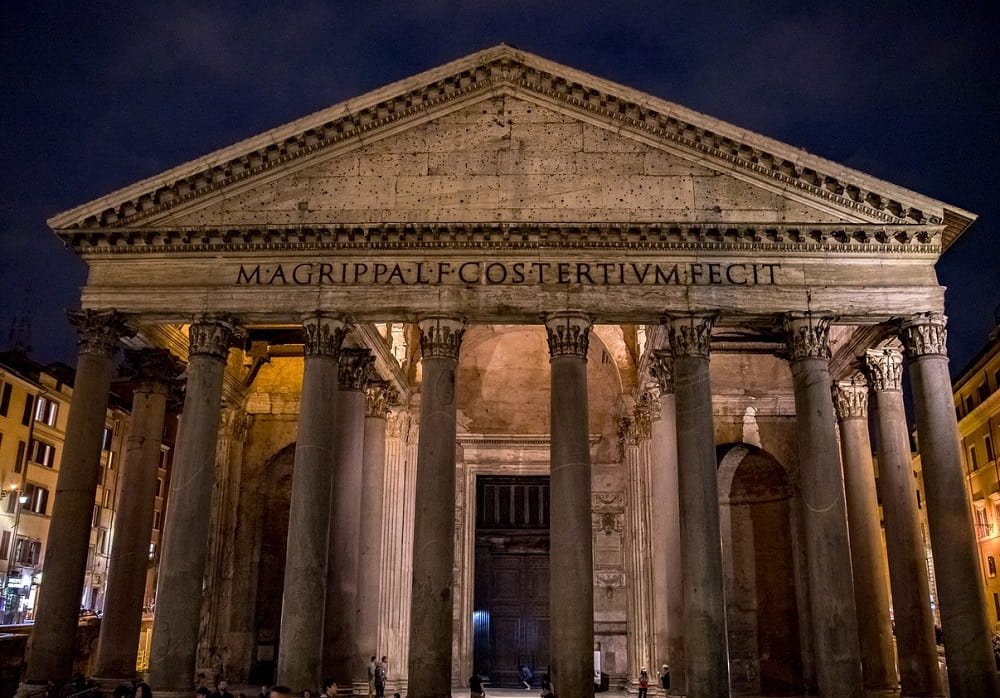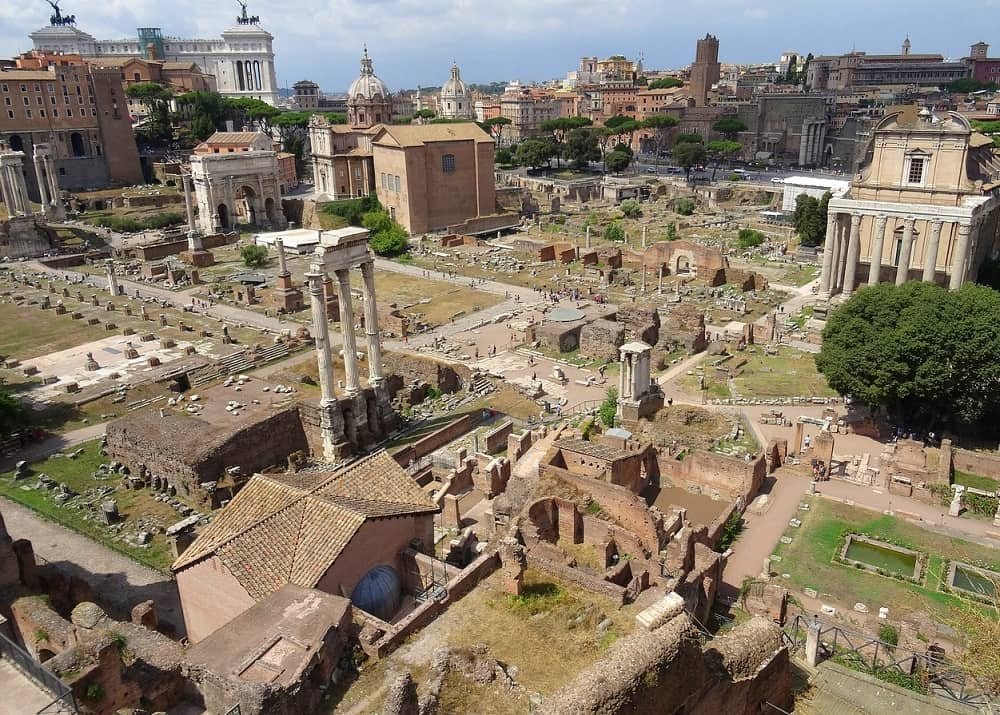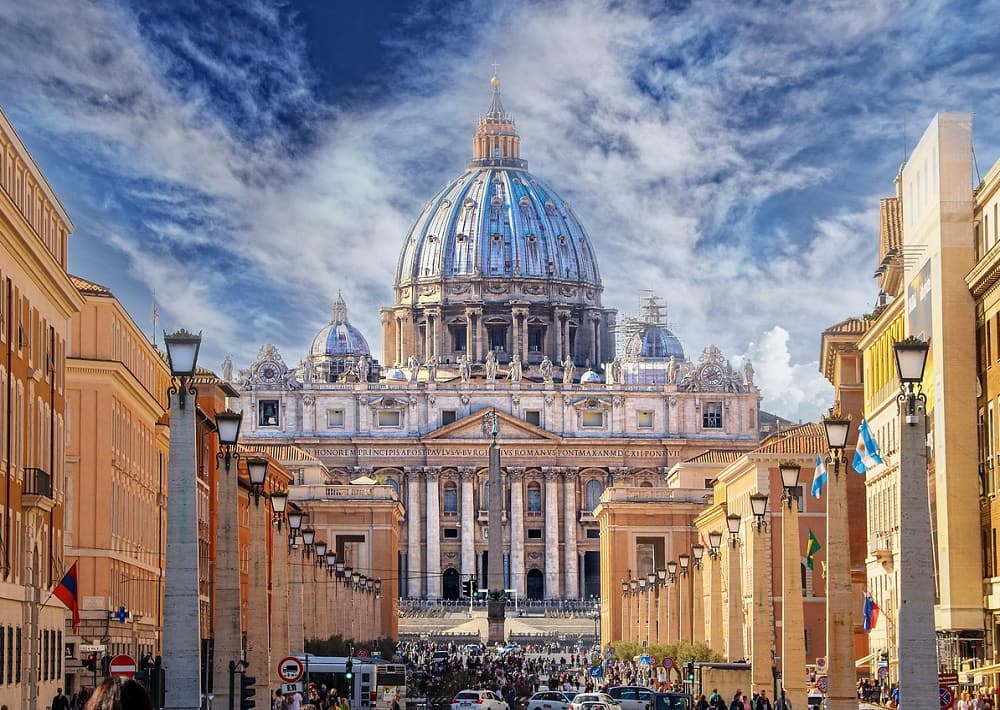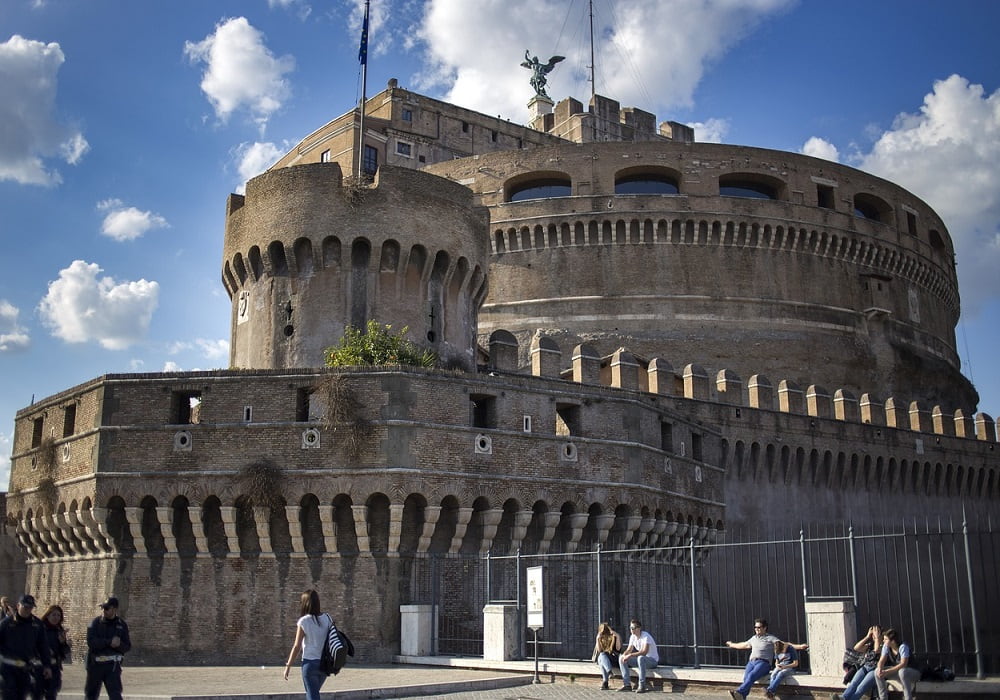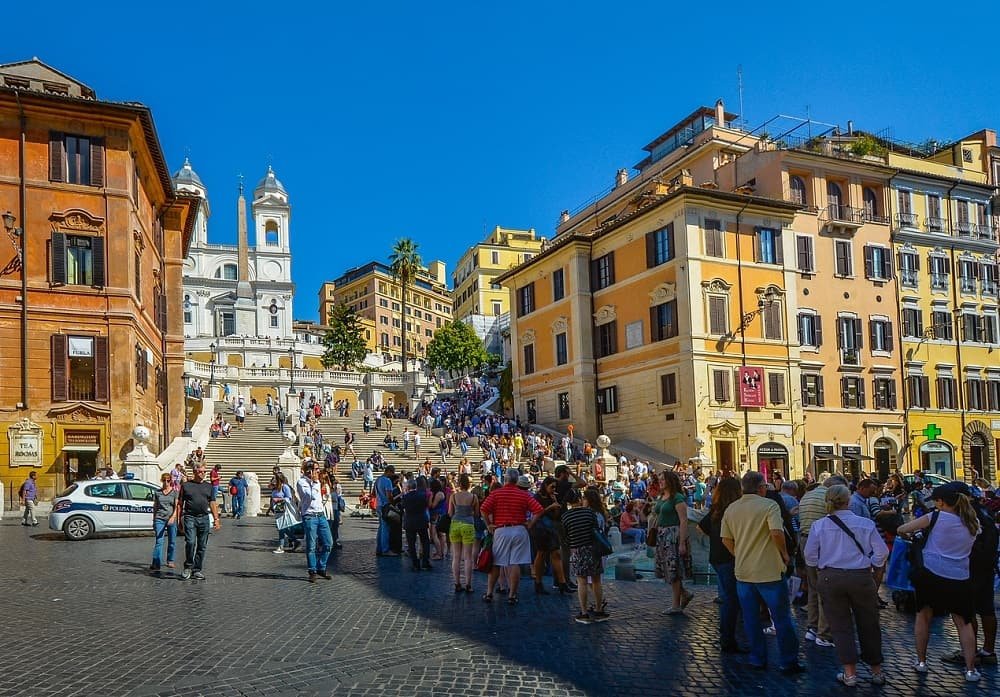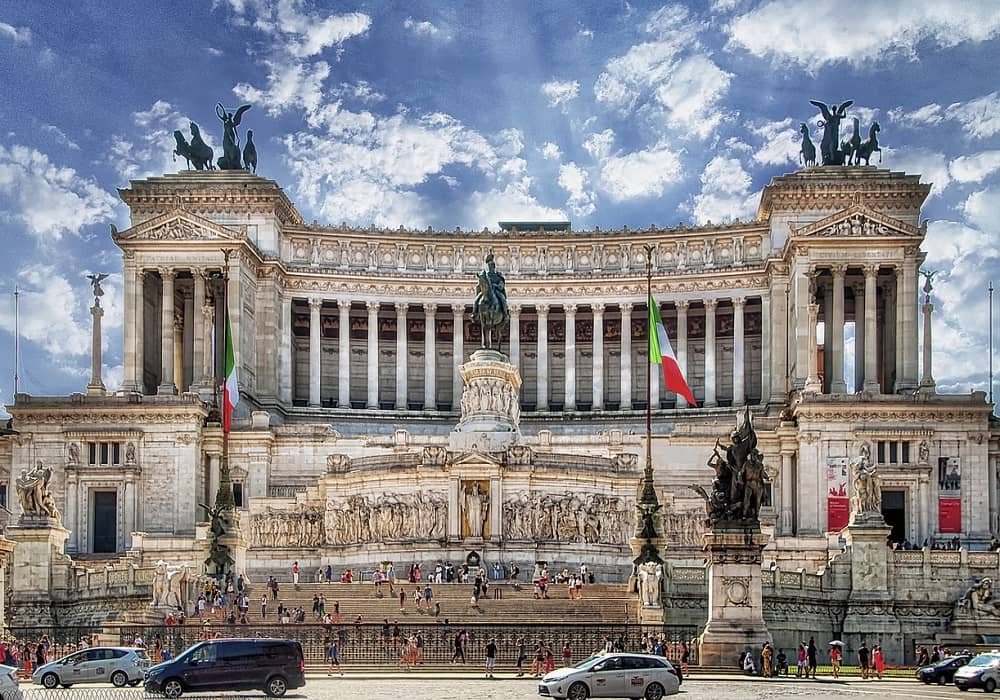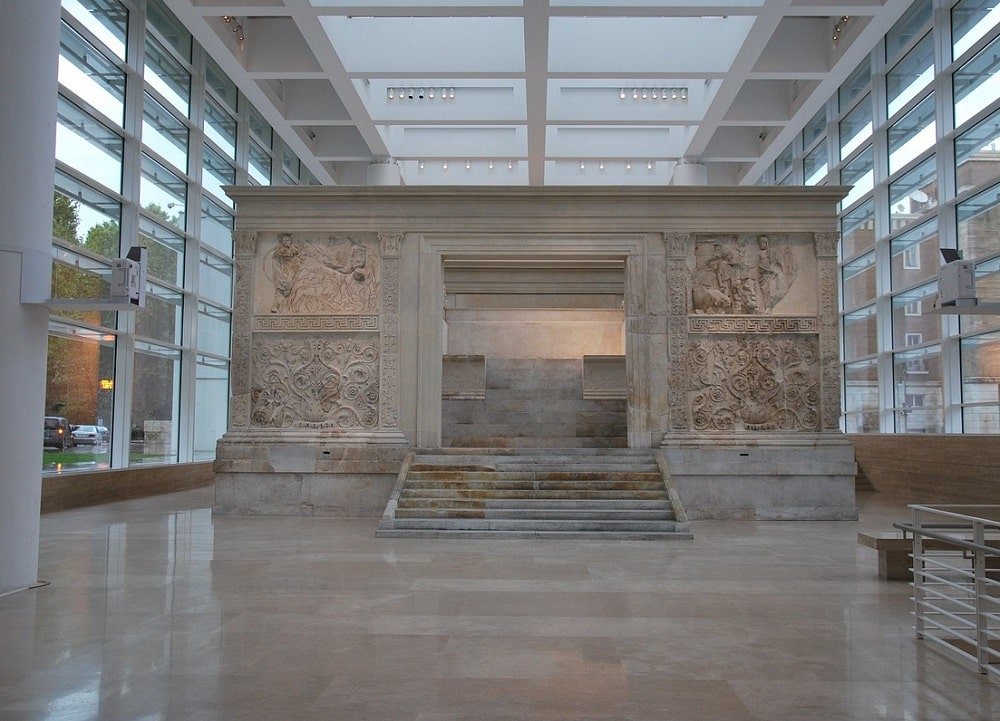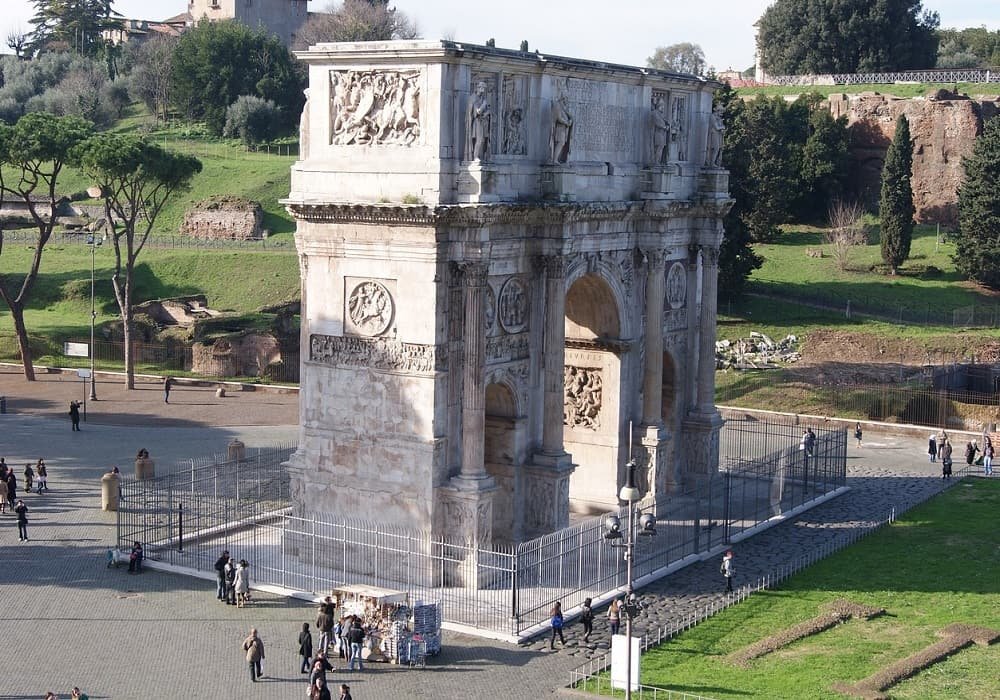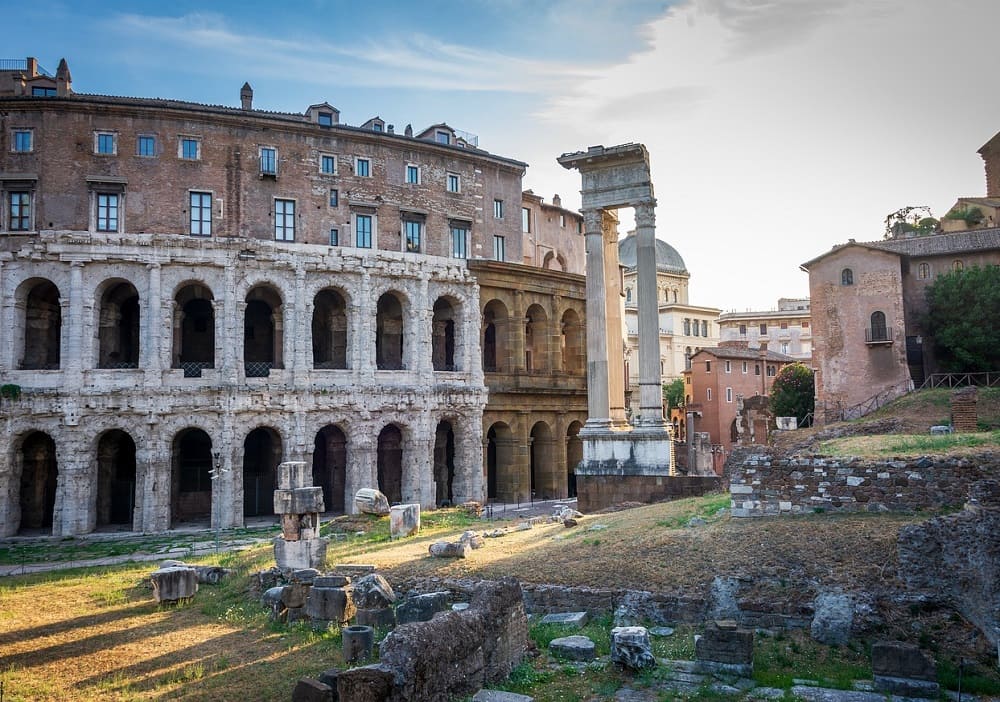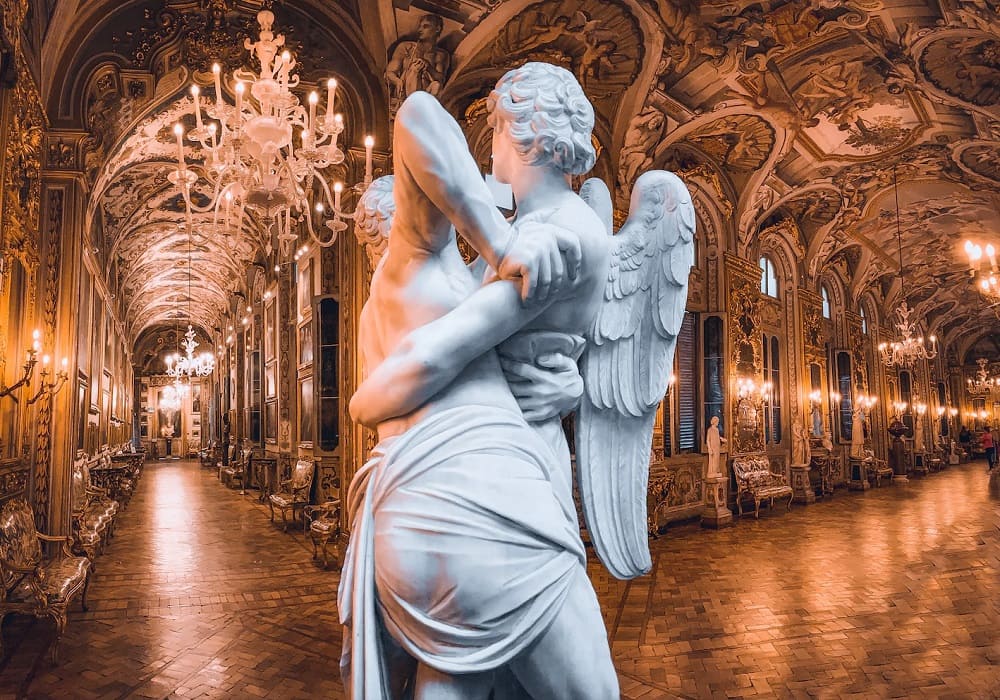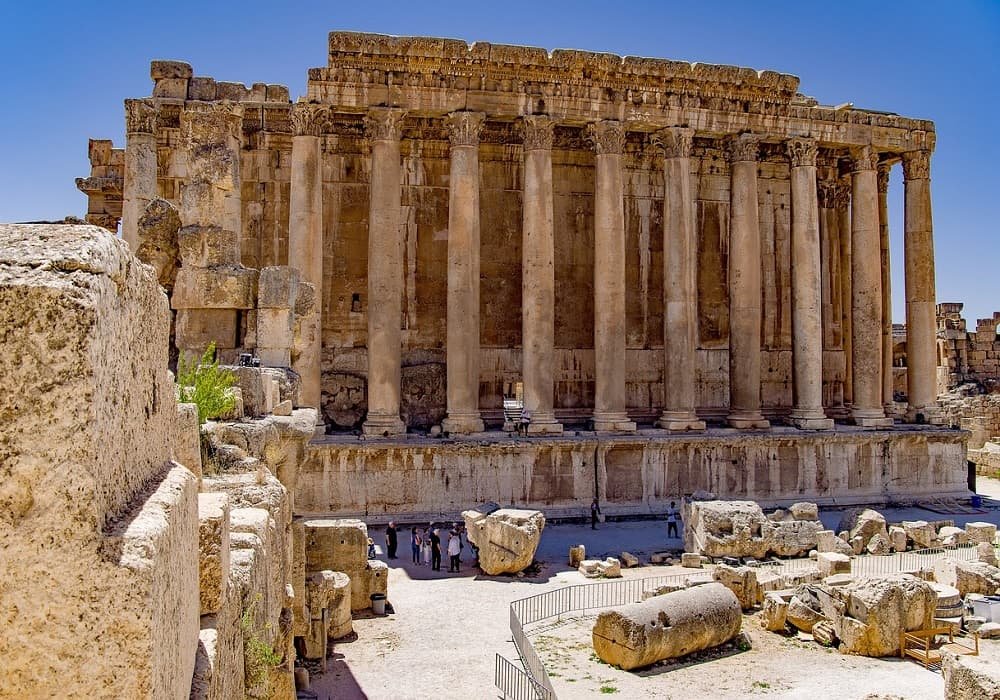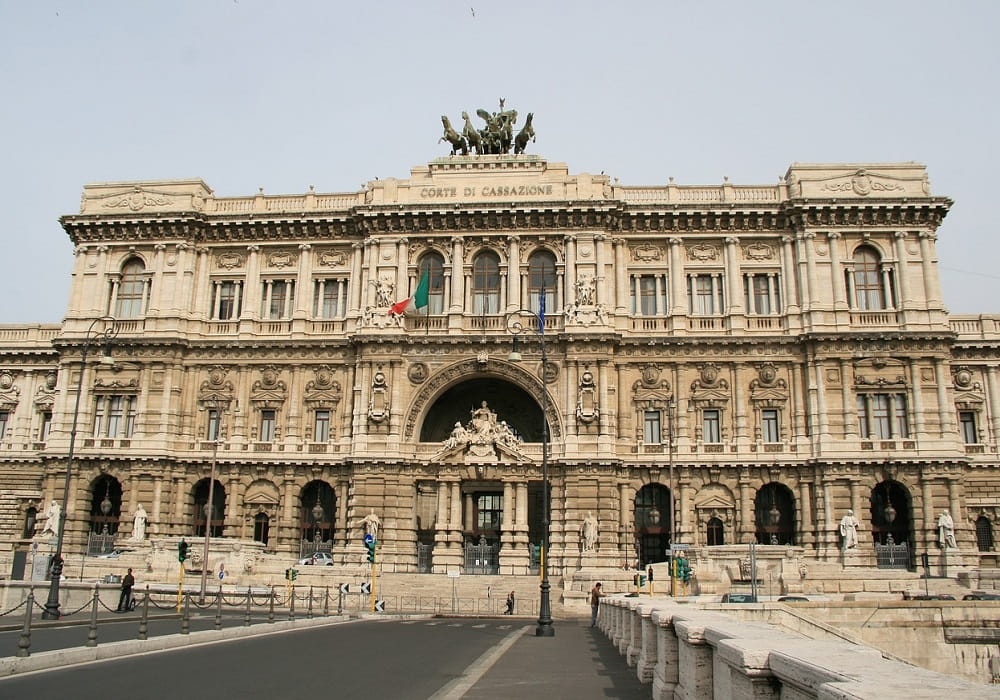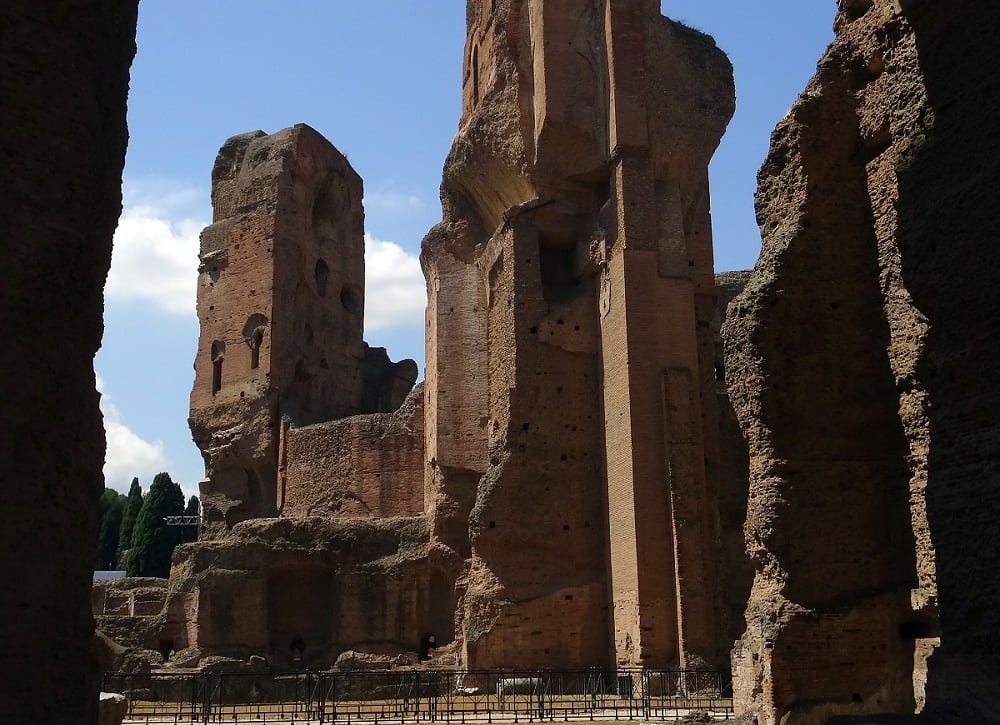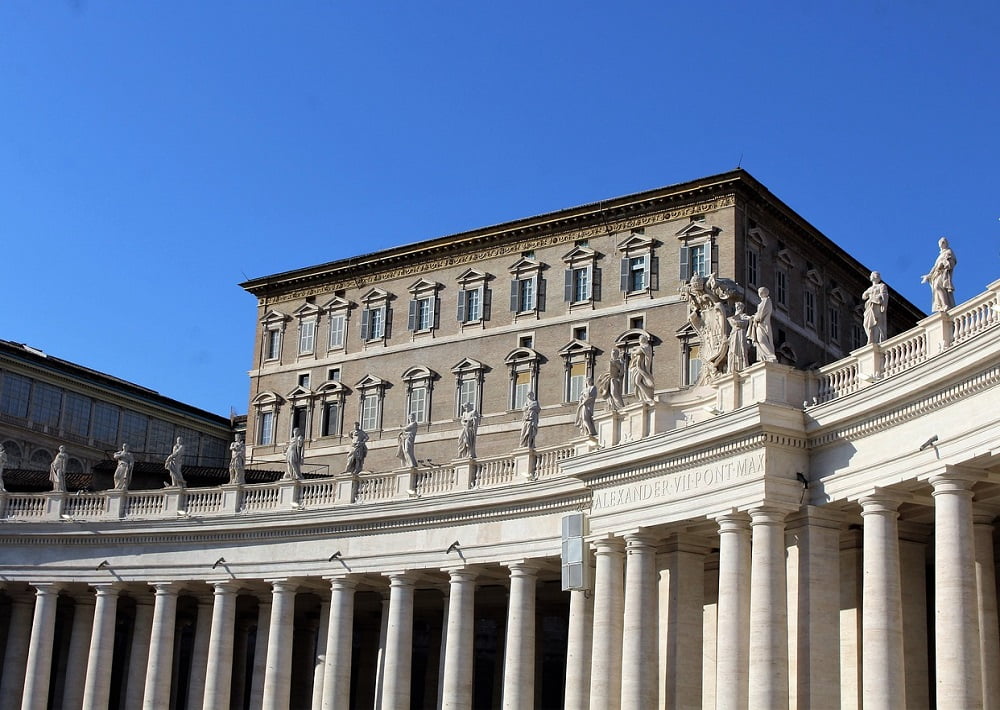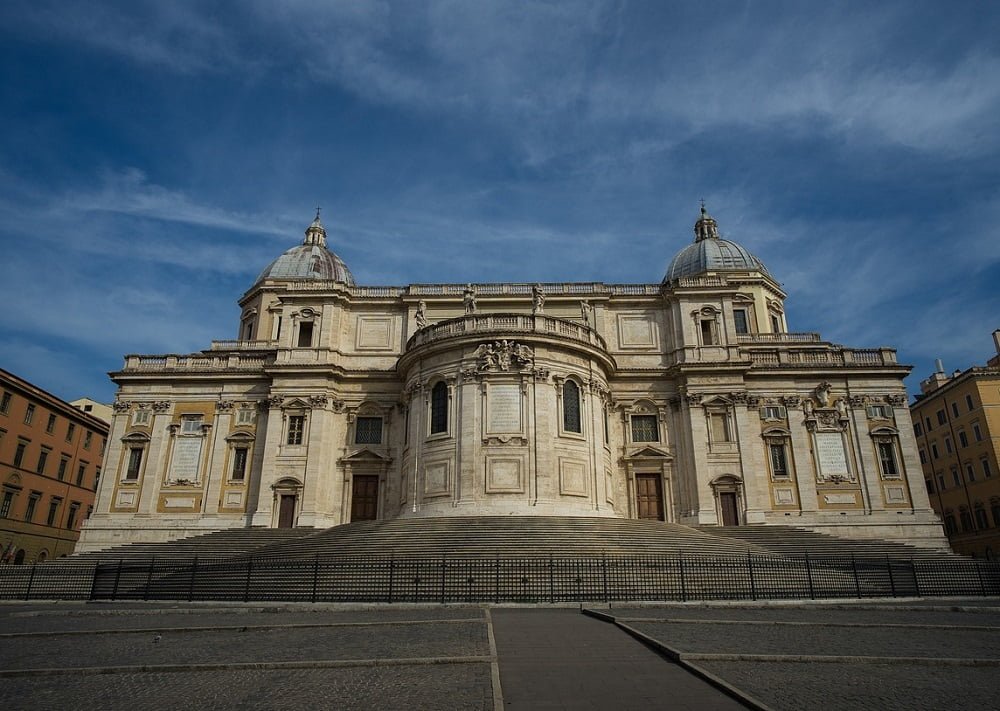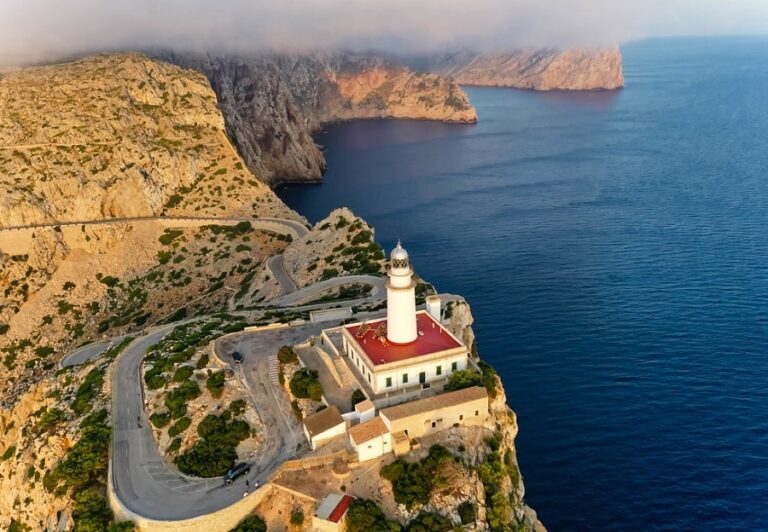Top 23 Famous Roman Buildings: Iconic Architecture
Last Updated on 4th December 2023 by admin
Rome is a city with a rich architectural heritage that spans from ancient times to the present day. Some of the most famous Roman buildings are the ones that showcase the skills and achievements of the Roman civilization, such as temples, amphitheaters, aqueducts, and palaces. Others are the ones that reflect the religious and artistic influence of the Catholic Church, such as basilicas, chapels, and museums.
Rome’s buildings reflect its history, culture, and power, as well as its artistic and engineering achievements. In this article, we will explore some of the top 23 famous Roman buildings that visitors can admire and learn from. It provides information on their location, history, style, and significance. It also highlights some of the masterpieces and treasures that they contain.
1) The Colosseum
The Colosseum is the largest amphitheater ever built and was used for gladiator battles and other spectacles. The Colosseum is a marvel of Roman engineering, featuring a complex system of underground tunnels, elevators, and trapdoors that allowed animals and performers to be brought into the arena.
It was constructed between 72 and 80 AD by the emperors Vespasian and Titus. The Colosseum is also a symbol of Rome’s endurance and resilience, as it has survived earthquakes, fires, vandalism, and wars over the centuries. The Colosseum is one of the Seven Wonders of the World and also one of the famous buildings in the world.
Famous For:
- It was a masterpiece of Roman architecture and engineering, using a complex system of vaults, columns, and concrete.
- It was used for entertainment events such as gladiatorial fights, animal hunts, battle reenactments, and naval warfare.
- The Colosseum was the largest amphitheater ever built in the Roman Empire and could host up to 80,000 spectators.
- The Colosseum is one of the most famous Roman buildings and a symbol of the Roman civilization and its engineering achievements.
- It is one of the seven wonders of the world, an iconic landmark of Rome and also one of the most popular tourist attractions in the world.
2) The Pantheon
The Pantheon is a domed temple devoted to all gods and the Roman dynasty. It was built by the emperor Hadrian between 118 and 125 AD, replacing an earlier temple that was destroyed by fire. The dome has an oculus (a circular opening) at its center that allows natural light to enter the interior.
The Pantheon is also remarkable for its harmonious proportions, elegant columns, and rich decoration, making it one of the famous Roman buildings. It is a former temple dedicated to all Roman gods and later converted into a Catholic church and a burial place for several important people.
Famous For:
- The Pantheon is famous for being one of the best-preserved monuments of ancient Rome and a masterpiece of Roman architecture and engineering.
- The Pantheon is famous for its magnificent dome, which is still the largest unreinforced concrete dome in the world.
- Having the largest brick dome in the history of architecture and a circular opening (oculus) at the center that is the only source of light.
- It is famous for being the most copied and taken as a model of all ancient works and for being the forerunner of all modern places of worship.
3) The Roman Forum
The Roman Forum is the site of the remains of ancient Rome’s government buildings. It was the center of political, religious, social, and commercial life in Rome for centuries. The Roman Forum was established around 500 BC and remained in use until the 8th century AD, making it one of the famous Roman architectures.
The Forum contains many monuments and structures that testify to Rome’s glory and history, such as the Arch of Titus, the Temple of Saturn, the Basilica of Maxentius, and the Rostra (a speaker’s platform). The Forum also offers a glimpse into the daily life of ancient Romans, as it was filled with shops, markets, temples, courts, and statues.
Famous For:
- The Roman Forum is famous for being the most important forum in ancient Rome and the center of public life for centuries.
- Faous for being the site of various religious, political, and social activities such as triumphal processions, elections, public speeches, criminal trials, and gladiatorial matches.
- The Roman Forum surrounded by the ruins of several important ancient government buildings such as the Curia, the Rostra, the Basilica Aemilia, the Temple of Saturn, and the Arch of Septimius Severus.
- The ancient site witnessed many historical events and the transformation of Rome from a republic to an empire to a medieval city.
- It is also famous for being one of the most visited archaeological sites in the world and a symbol of Rome’s ancient glory.
4) St Peter’s Basilica
St Peter’s Basilica is one of the 900 churches in Italy and was made by Renaissance artists. It is located in Vatican City, the seat of the Roman Catholic Church and a sovereign state within Rome. St Peter’s Basilica is built over the tomb of St Peter, one of the apostles of Jesus and the first pope, construction beginning in 1506 and completed in 1626.
St Peter’s Basilica is the largest church in the world and can accommodate up to 60,000 people. St Peter’s Basilica is renowned for its splendid architecture, art, and decoration, featuring works by Michelangelo, Bernini, Bramante, Raphael, and many others.
Famous For:
- It is most famous for being the largest church in the world and one of the most famous works of Renaissance and Baroque architecture.
- Built over the tomb of St Peter, the first apostle and the first pope of Christianity, and containing many relics and artworks related to him.
- It is the church of the popes and the site of many liturgies and ceremonies presided over by them, as well as a major pilgrimage site for Catholics.
- Famous for being decorated with masterpieces by artists such as Michelangelo, Bernini, Bramante, Raphael, and Maderno, among others.
- Having a magnificent dome that dominates the skyline of Rome and a spacious square that can accommodate thousands of people.
5) The Sistine Chapel
The Sistine Chapel is famous for its frescoes by Michelangelo and other artists. It is located within the Vatican Palace and serves as the pope’s private chapel and the site of papal elections. The Sistine Chapel was built between 1473 and 1481 by Pope Sixtus IV (hence its name) and decorated by various painters such as Botticelli, Perugino, Ghirlandaio, and Rosselli.
However, it is Michelangelo who transformed the chapel into a masterpiece with his frescoes on the ceiling (1508-1512) and on the altar wall (1536-1541). The ceiling depicts scenes from Genesis such as The Creation of Adam, while the altar wall shows The Last Judgment
Famous For:
- Most famous as a chapel in the Vatican Palace that is used for papal ceremonies and conclaves.
- The Chapel decorated with frescoes by many Renaissance painters such as Botticelli, Perugino, and Pinturicchio, depicting scenes from the life of Christ and Moses.
- It is a masterpiece of Michelangelo, who painted the ceiling and the west wall with scenes from the Genesis and the Last Judgment, respectively.
- Being one of the most influential works of art in history, inspiring generations of artists and admirers with its beauty and symbolism.
- Being a UNESCO World Heritage Site and one of the most visited attractions in Rome.
6) Castel Sant’Angelo
Castel Sant’Angelo was originally built as the mausoleum for Emperor Hadrian in 139 AD, and it has been many things since. It has served as a fortress, a prison, a papal residence, a museum, and a national monument. However, Castel Sant’Angelo is still listed among the famous Roman buildings.
Castel Sant’Angelo is connected to St Peter’s Basilica by a fortified corridor called the Passetto di Borgo, which allowed popes to escape in times of danger. Castel Sant’Angelo is also known for its angel statue on top, which gives it its name.
Famous For:
- It is famous as a cylindrical building that was originally built as a mausoleum for Emperor Hadrian and his family in the 2nd century AD.
- It was once a famous castle and a fort that was used by people for protection and residence from the 6th to the 14th century, and later as a prison and a museum.
- Being a monument that contains many historical and artistic treasures, such as Roman sculptures, Renaissance frescoes, papal apartments, and a collection of weapons.
- Famous as a landmark that is connected to the Vatican by a fortified corridor called the Passetto di Borgo, and that features a statue of the Archangel Michael on its top.
- It is one of the famous tourist attractions in Italy that offers panoramic views of Rome and the Tiber River from its terrace.
7) The Trevi Fountain
The Trevi Fountain is the largest and one of the most famous fountains in the world. It was built between 1732 and 1762 by Nicola Salvi and Giuseppe Pannini, following a design by Bernini. The fountain depicts Oceanus, the god of water, riding a chariot pulled by sea horses and tritons, surrounded by rocks, plants, and statues of allegorical figures.
The fountain is fed by an ancient aqueduct that dates back to 19 BC. The fountain is also a popular tourist attraction, as it is said that throwing a coin into the water ensures a return to Rome. Designed by Nicola Salvi and completed by Giuseppe Pannini in 1762, after a long and complex history of construction and competition.
Famous For:
- It is famous for being the largest and most famous Baroque fountain in Rome and one of the most spectacular fountains in the world.
- The terminal point of the Acqua Vergine, one of the ancient aqueducts that supplied water to Rome and depicting an allegory of the taming of the waters.
- Being adorned with statues of Oceanus, Abundance, Health, Tritons, and other mythological and allegorical figures, as well as a relief showing a virgin indicating the source of water to Roman technicians.
- The object of a popular legend that says that those who toss coins into its waters will return to Rome or have their wishes granted.
- This beautiful fountain is featured in several films, such as Three Coins in the Fountain, Roman Holiday, La Dolce Vita, and The Lizzie McGuire Movie.
8) The Spanish Steps
The Spanish Steps (Scalinata di Trinità dei Monti) are a famous landmark in Rome, Italy. The Spanish Steps are a set of 135 steps that connect the Piazza di Spagna (Spanish Square) with the Piazza Trinità dei Monti (Trinity of the Mountains Square). They were built between 1723 and 1725 by Francesco de Sanctis and Alessandro Specchi, with funds from the French king Louis XIV.
The steps are adorned with flowers, fountains, and a monumental obelisk at the top. The steps are also a popular meeting place for locals and visitors, as well as a backdrop for fashion shows and cultural events. It is a popular tourist attraction and a symbol of Rome’s culture and charm.
Famous For:
- Famous for being a monumental stairway of 135 steps that connects the Piazza di Spagna at the base and the Piazza Trinità dei Monti at the top, where the Trinità dei Monti church is located.
- Being commissioned by Cardinal Pierre Guérin de Tencin and designed by Francesco de Sanctis in the 18th century, after a long and complex history of construction and competition.
- Famous as an example of Roman Baroque style, with its elegant curves, terraces, balustrades, and ornaments, as well as a fountain at the base called Fontana della Barcaccia.
- It is a meeting place for artists, poets, writers, and models, who were inspired by its beauty and atmosphere, and a setting for several films, such as Roman Holiday and The Talented Mr. Ripley.
9) The Altare della Patria
The Altare della Patria (Altar of the Fatherland) is a monumental complex that honors Victor Emmanuel II, the first king of unified Italy. It was built between 1885 and 1925 by Giuseppe Sacconi and other architects, following a neoclassical style.
The complex consists of a large white marble building with columns, statues, fountains, and a central equestrian statue of Victor Emmanuel II. The complex also houses the Tomb of the Unknown Soldier, a symbol of Italy’s sacrifice in World War I. The complex offers panoramic views of Rome from its terraces and museum.
Famous For:
- It is the largest monument to have ever been built in Botticino marble, a moldable and light marble from Brescia.
- Famous for an impressive architecture that resembles a Roman forum on a larger scale, with Corinthian columns, stairs, statues and fountains.
- Holding the tomb of the unspecified soldier, a place where the eternal flame shines and guarded by two soldiers.
- Having a panoramic terrace that offers a breath-taking view of Rome, accessible by panoramic elevators.
- Housing the Museum of the Risorgimento, a museum dedicated to the unification of Italy and its history.
10) The Ara Pacis
The Ara Pacis (Altar of Peace) is an ancient altar dedicated to Pax, the goddess of peace. It was built between 13 and 9 BC by the emperor Augustus to celebrate his victories and the establishment of peace in the Roman Empire. Being preserved in a modern museum designed by Richard Meier that protects it from pollution and weathering.
The altar is decorated with reliefs that depict scenes of Roman history, mythology, and religion, as well as portraits of Augustus and his family. The altar is housed in a modern glass and steel museum designed by Richard Meier, which opened in 2006. The museum also displays other artifacts related to Augustus and his era.
Famous For:
- It is famous for being a symbol of Augustus’ vision of Roman civil religion and his role as a restorer of peace and order.
- Having a richly sculpted exterior frieze that depicts various scenes of Roman history and mythology, such as the sacrificial procession of the imperial family, the founding of Rome by Romulus and Remus, and the personifications of various provinces and virtues.
- Having a simple interior altar that shows agricultural work and animal sacrifice, representing the abundance and piety of the Roman people.
- It was carved entirely in Luna marble, a fine white marble from Carrara.
11) Arch of Constantine
The Arch of Constantine is a triumphal arch in Rome dedicated to the emperor Constantine the Great. The arch was commissioned by the Roman Senate to commemorate Constantine’s victory over Maxentius at the Battle of Milvian Bridge in AD 312. It is the largest surviving Roman triumphal arch and the last great monument of Imperial Rome.
It is located along the Via Triumphalis, the route taken by victorious military leaders when they entered the city in a triumphal procession. It has three bays, with a large central arch and two smaller side arches, each flanked by detached Corinthian columns on pedestals.
Famous For:
- The largest surviving Roman triumphal arch and the last great monument of Imperial Rome, and one of the famous Roman architectures.
- A symbol of Constantine’s victory over Maxentius and his establishment of Christianity as the official religion of the empire.
- A showcase of political propaganda and artistic recycling, as it re-uses sculptures from earlier monuments to create a new message of continuity and legitimacy.
- It represents a stylistic change in Roman art, as it combines earlier classical sculptures with new Constantinian reliefs that are more abstract and expressive.
12) Teatro Marcello
The Teatro Marcello is Rome’s ancient open-air theatre, built in the last years of the Roman Republic. It was named after Marcus Claudius Marcellus, the nephew and son-in-law of Augustus, who died before the theatre was completed. It was started by Julius Caesar in 27 BC, but it was finished by Augustus in 13 BC and dedicated to his favorite nephew Marcellus, who died young in 23 BC.
It was the model for the Colosseum, which was built later and became more famous. It had a similar structure with three levels of arches and columns, but it was smaller and used for theatrical performances rather than gladiatorial games.
Famous For:
- Being one of the largest and oldest theatres in Rome, with a capacity of about 20,000 spectators.
- Having a remarkable architecture that influenced later buildings such as the Colosseum and the Theatre of Pompey. It has a semicircular façade with three levels of arches and columns, decorated with sculptures and reliefs.
- Being located in the Jewish Ghetto area of Rome, where it was incorporated into a medieval fortress and later into a residential complex. It is also known as the Jewish Colosseum for its resemblance to the original Colosseum.
- Hosting various cultural events and concerts in the summer months, offering a unique experience of enjoying ancient and modern art in the same place.
13) Trajan’s Market
Trajan’s Market is a large complex of ruins in Rome, built in the early 2nd century CE during the reign of Emperor Trajan. It was part of Trajan’s Forum, a monumental public space that included a basilica, a temple, a column, and libraries.
It is part of the larger Trajan’s Forum complex, which was commissioned by Trajan after his victory over ancient Dacia (now Romania). Trajan’s Market is also a remarkable example of Roman engineering and architecture, using concrete and brick as the main materials.
Famous For:
- Trojan Market is believed to be the oldest shopping mall in the world, consisting of many shops and apartments.
- Trajan’s Market is famous for its architectural design, which used concrete and brick to create a semi-circular façade with arcades and pilasters.
- It is also famous for its historical significance, as it reflects the economic and cultural prosperity of Rome under Trajan’s rule.
- Today, Trajan’s Market is a famous tourist attraction and also houses the Museum of the Imperial Fora, which displays artifacts from all of ancient Rome’s forums.
14) MAXXI
The MAXXI is a modern art and architecture museum located in Rome, Italy. It is the first Italian museum devoted to contemporary creativity. It was designed by the famous architect Zaha Hadid and features innovative and spectacular forms, and it is one of the famous Roman buildings of Modern time.
The museum opened in 2009 and has a collection of over 300 works of art and architecture. The museum also has an outdoor courtyard for large-scale works of art, a branch in L’Aquila, a city that was damaged by an earthquake in 2009, and various educational and cultural programmes.
Famous For:
- The MAXXI museum hosts a wide range of temporary exhibitions, covering topics such as architecture, design, photography, and performance art.
- The MAXXI museum is famous for its innovative architecture, world-class collection of contemporary art, engaging exhibitions, educational programs, and prime location in Rome.
- The building’s flowing lines and dynamic shapes make it an icon of contemporary architecture, and one of the largest museums in Rome.
- The museum consists of two museums: MAXXI art and MAXXI architecture, which showcase works by Italian and international artists and architects.
15) Palazzo Doria Pamphilj
Palazzo Doria Pamphilj is a stunning palace located in Rome, Italy. It is home to the Doria Pamphilj Gallery, a large private art collection that showcases beautiful sculptures, famous paintings and antiquities from the 15th to the 18th centuries.
It is still owned and inhabited by the descendants of the Pamphilj family, who narrate the free audio guide and share their family stories. The palace also contains private apartments for members of the Pamphilj family, one of the most influential aristocratic families in Rome.
Famous For:
- It is most famous as a private gallery in Rome, housing valuable works by great masters such as Raphael, Brueghel the Elder, Tiziano, Caravaggio, Bernini and Velazquez.
- It contains the famous Portrait of Pope Innocent X by Velazquez, which shows the pope’s realistic and sinister visage.
- It is a lavish 17th century Roman-Rococo palace that showcases the original decor and furniture of the aristocratic Pamphilj family.
- It is one of the finest Rococo palaces preserved in Rome today, constructed on the foundations of a residence belonging to Cardinal Fazio Santoro in the 16th century.
16) The Circus Maximus
The Circus Maximus was the largest stadium in ancient Rome and was used for chariot races and other public events. It was built in the 6th century BC and could accommodate up to 250,000 spectators. The stadium had a long oval shape with a central spine (spina) that divided the track into two lanes.
The spina was decorated with obelisks, statues, fountains, and temples. The stadium also had starting gates (carceres), towers (metae), stands (cavea), and a royal box (pulvinar). The Circus Maximus was the scene of many thrilling and bloody races, as well as festivals, ceremonies, and spectacles.
Famous For:
- It was the first and largest stadium in ancient Rome and the subsequent Empire, making it one of the most famous Roman buildings still in existence.
- The Circus Maximus was famous for its chariot races, which were the most popular sport in ancient Rome.
- It was the center of Roman social and political life, where the emperor and other high dignitaries could interact with their subjects and show their generosity.
- It was the venue for religious festivals, public executions, gladiator fights, and wild animal hunts.
- It was a symbol of Rome’s power and glory, as well as its passion for entertainment and spectacle.
17) The Temples of Baalbek
The Temples of Baalbek are a complex of ancient temples located in the city of Baalbek in Lebanon. They are among the most impressive examples of Roman architecture and engineering in the world. They are located in a strategic position at the crossroads of ancient trade routes and near the source of the Litani and Orontes rivers.
They include two of the largest and grandest Roman temples ever constructed: the Temple of Jupiter, which had 20 m high columns and a terrace with gigantic stone blocks weighing over 800 tons; and the Temple of Bacchus, which was richly decorated with sculptures and reliefs.
Famous For:
- Temples are world famous because they were built on top of a sacred site dating back to Phoenician and Canaanite times, where a triad of gods was worshipped: Baal (Jupiter), Astarte (Venus) and Hadad (Wed).
- They also contain other remarkable structures, such as the Temple of Venus, which had a unique circular design; the Temple of Mercury, which was located on a hill and accessed by a stairway carved from the rock; and the Odeon, which was a small theater for musical performances.
- They are part of a UNESCO World Heritage Site since 1984, recognized for their outstanding artistic and cultural value.
- They have survived centuries of natural disasters, wars and invasions, and still retain their original beauty and majesty.
18) Corte Supreme di Cassazione
Corte Suprema di Cassazione is the Italian name for the Supreme Court of Cassation, which is the highest court of appeal or court of last resort in Italy. It was established on January 30, 1941, by a royal decree. It ensures the correct application of law in the lower and appeal courts and resolves disputes as to which lower court (penal, civil, administrative, military) has jurisdiction to hear a given case.
It can reject, confirm, amend or annul a sentence from a lower court, but it cannot overrule the trial court’s interpretation of the evidence. It is headed by a president, who is appointed by the president of the republic among the most senior judges of the court.
Famous For:
- Being the highest court of appeal or court of last resort in Italy, ensuring the correct application of law and its uniform interpretation.
- Having its seat in the Palace of Justice, Rome, an enormous and ostentatious building that dominates the banks of the Tiber River.
- Being established in 1941 by a royal decree, although its origins date back to the Napoleonic era.
- Having a president who is appointed by the president of the republic among the most senior judges of the court.
- Having five sections: three civil sections, one penal section and one joint section.
19) The Baths of Caracalla
The Baths of Caracalla were one of the largest and most luxurious public baths in ancient Rome and one of the famous Roman buildings. They were built between 212 and 217 AD by the emperor Caracalla and could accommodate up to 1,600 bathers at a time. The baths consisted of a complex of buildings that included hot, warm, and cold pools, saunas, gyms, libraries, gardens, and shops.
The baths were also decorated with mosaics, sculptures, and paintings that showcased Roman art and culture. The baths were in use until the 6th century AD, when they were damaged by earthquakes and barbarian invasions.
Famous For:
- It is famous for being the second largest Roman public baths, or thermae, after the Baths of Diocletian.
- It is an ancient bath and famous for being built between AD 212 and 216/217 by emperors Septimius Severus and Caracalla.
- Accommodating about 1,600 bathers and having lavish marble, sculpture, mosaic, fresco and other decorations.
- Having a large vaulted hall with clerestory windows that influenced later architects such as Bramante, Palladio and McKim, Mead & White.
- Being the site of summertime open-air performances of ballet and opera.
20) Maison Carrée
Maison Carrée is an ancient Roman temple and one of the famous Roman architectures located in Nîmes, France. It was built between 16 BC and 7 AD by Marcus Vipsanius Agrippa, the close friend and confidant of Emperor Augustus. The temple has a single cella, a deep porch, a frontal orientation, and sits atop a high podium.
It is decorated with Corinthian columns and capitals, egg-and-dart motifs, and ornamental reliefs. The temple has been used for various purposes throughout history, such as a church, archives, a town hall, and a museum. It has also inspired many neoclassical buildings, such as the Église de la Madeleine in Paris and the Virginia State Capitol in the United States.
Famous For:
- Maison Carrée is one of the best-preserved Roman temples in the world, with almost all of its original structure and decoration intact.
- It is a classic example of Vitruvian architecture, following the principles and proportions described by the ancient Roman architect Vitruvius in his treatise On Architecture.
- It was dedicated to Gaius and Lucius Caesar, the grandsons and adopted heirs of Augustus, the first Roman emperor and the founder of the Julio-Claudian dynasty.
- It has been used for various purposes throughout history, such as a church, archives, a town hall, and a museum, reflecting the changing cultural and political contexts of Nîmes and France.
21) The Pyramid of Cestius
The Pyramid of Cestius is an ancient tomb that was built between 18 and 12 BC by Gaius Cestius, a wealthy Roman magistrate. It is one of the few surviving examples of Roman pyramids, which were inspired by the Egyptian ones. The pyramid has a base of 29.6 meters (97 feet) and a height of 36.4 meters (119 feet) and consider as one of the famous Roman buildings.
It is made of concrete covered with white marble slabs and decorated with reliefs and inscriptions. The pyramid was incorporated into the Aurelian Walls in the 3rd century AD and served as a defensive tower. The pyramid was also used as a Christian cemetery in the Middle Ages and as a storage place for gunpowder in the Renaissance.
Famous For:
- Famous as only “Egyptian” pyramid in Europe and a result of Egyptomania that gripped Rome after the conquest of Egypt in 30 BC.
- Being built as a tomb for Gaius Cestius, a wealthy Roman and a member of the Epulones religious corporation, between 18 and 12 BC.
- Having a steeper angle than the Egyptian pyramids, possibly due to incorrect information, innovation or inspiration from the Nubian pyramids.
- Fmaous for being incorporated into the Aurelian walls as a fortification in the 3rd century AD, which helped it survive the centuries.
- Being associated with the legendary tomb of Remus, one of the founders of Rome, in the Middle Ages.
22) Apostolic Palace (Vatican Palace)
The Apostolic Palace is the official residence of the pope, the head of the Catholic Church, located in Vatican City. It is also known as the Papal Palace and the Vatican Palace, and it is one of the famous Roman buildings. There is Vatican Museums and Galleries, which display artworks and artifacts from different periods and cultures.
The Apostolic Palace was built over several centuries by different popes and architects. It has a rich history and art collection that reflects the religious and cultural heritage of the papacy. It is one of the most visited places in Rome and a symbol of the Catholic faith.
Famous For:
- It is famous for being the official residence of the pope and the headquarters of the Catholic Church
- It is also the site of the papal blessing, where the pope addresses the faithful from the window of his apartment.
- It is the home of the Sistine Chapel, where Michelangelo painted his masterpiece of the ceiling and the Last Judgment
- Being the home of the Vatican Library, which holds one of the oldest and largest collections of books and manuscripts in the world.
- The Apostolic Palace is also the home of the Vatican Museums and Galleries, which display artworks and artifacts from ancient Egypt, Greece, Rome, Etruria, Mesopotamia, Persia, India, China, Japan, Africa, America, and Oceania
23) Basilica of Santa Maria Maggiore
Basilica of Santa Maria Maggiore, also known as the Basilica di Santa Maria Maggiore in Italian is one of the four major basilicas in Rome. The Basilica of Santa Maria Maggiore is one of the most significant and oldest churches in Rome. It was founded in the 4th century AD and has since undergone several renovations and additions.
It has a stunning facade with a loggia and a bell tower and one of the famous Roman buildings. It has a nave with mosaics, a coffered ceiling with gold from the Americas, and a chapel with the relics of the Holy Crib. It is built on the site of a miraculous snowfall that marked the shape of the church according to a legend.
Famous For:
- The most famous as a one of the four major basilicas in Rome and one of the largest churches dedicated to the Virgin Mary.
- The Basilica of Santa Maria Maggiore is famous for its impressive architecture and art. It has a beautiful nave with intricate mosaics, frescoes, and sculptures, including a famous icon of the Virgin Mary, known as the Salus Populi Romani.
- Having a coffered ceiling with gold from the Americas that was donated by Pope Alexander VI
- There is a chapel with the relics of the Holy Crib, believed to be part of the manger where Jesus was born.
- Having a Renaissance ceiling with frescoes by Pinturicchio and Perugino
These are some of the most famous Roman buildings that showcase its architectural splendor and diversity. Rome is a city that has a rich and diverse architectural heritage that spans from ancient times to modern days. Rome is truly a treasure trove of art and culture that fascinates and delights. Rome is a city that has something for everyone, whether you are interested in ancient history, art, culture, or religion. Rome is truly an eternal city that never ceases to amaze and inspire and truly a living museum that offers endless surprises and wonders.


